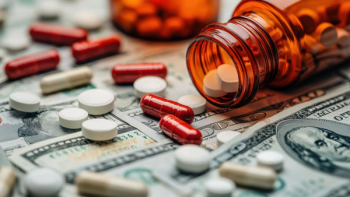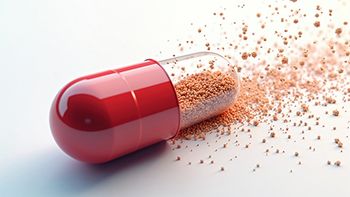
- Pharmaceutical Commerce - August 2022
- Volume 17
- Issue 4
Tapping Industry’s Reach in Maryland
A look into one of the East Coast’s major life science hubs
Maryland is home to one of the US’s largest life sciences clusters, housing more than 3,400 businesses in the sector. The state’s life sciences companies generate $20.7 billion in economic activity and receive more than a billion dollars in federal contracts annually. The region offers proximity to “a powerhouse supply of research and development”—more than 74 federal laboratories, including FDA and the National Institutes of Health (NIH), and over 50 universities, many with thriving university research parks, as well as “50+ incubators, accelerators, and co-working spaces for Maryland innovators and international entrepreneurs.”
Pharma Commerce sat down recently with Ulyana V. Desiderio, PhD, director of life sciences at the Maryland Department of Commerce, to dig deeper into the state’s industry opportunities and to look at how the last couple of years have affected its fortunes.
Can you tell us about Maryland’s life sciences sector and what makes it attractive to new and established companies?
Maryland is part of the larger capital region of the US and the East Coast; we talk about Maryland, but we’re also very close to Washington, DC and Virginia. So, depending on who you ask, the BioHealth Capital Region is actually the third or fourth largest in the US. Accordingly, we house a very large and diverse life sciences sector. We have over 3,400 organizations in the state that touch life sciences in one way or another, whether that’s biotech R&D or service providers. We have a lot of clinical research organizations, lots of contract manufacturing. The state is also very attractive for biomanufacturing. We offer many financial incentives for that, which have attracted, for example, Kite Pharma, which has its largest CAR-T manufacturing facility in the US in Maryland. And from outside the country, our incentives have led Ellume, an Australian company manufacturing diagnostics, including the COVID-19 at-home test, to establish a facility here. We also have a very strong medtech and device sector; there’s a lot of innovation coming from the medtech side as well as in digital health and health IT.
What makes us unique, in terms of our ecosystem, is that Maryland is home to a very large federal government presence. NIH, FDA, and the Centers for Medicare and Medicaid Services (CMS) are headquartered here. There are over 70 military and civil installations here. [There is] proximity to these agencies—agencies that fund, regulate, and set reimbursement policy for life sciences products. Businesses really benefit from the proximity to these agencies. If you need to meet with the FDA, for example, you can just drive over there.
And let’s not forget our top universities, which include Johns Hopkins University and the University of Maryland. Johns Hopkins is consistently ranked as the top school of public health in the world. There’s a healthy pipeline of life science companies that are spinning out from these universities, which, over the years, have been very successful in getting funding. It’s been wonderful to see the natural progression and evolution of these companies from “babies,” if you like, to teenagers and then to adults.
How is Maryland further incentivizing companies to come to the state?
We’ve had great success incentivizing companies to come to Maryland. That’s really down to the leadership of our state; our governor and our general assembly have worked to establish Maryland as a very business-friendly region. Our motto is “Maryland is open for business.” The kind of incentives we provide may be similar to other states, but there are a few important exceptions. We have over 50 different programs that companies can tap into, whether they’re already here or they’re thinking of coming here. They fall into the categories of grants, low insurance loans, tax, and credits. A lot of our programs are tied to job creation; if a company is coming in and they’re going to hire people locally, we incentivize them with a generous tax credit, either per employee or per a percentage of their salary. Salaries are pretty high in life sciences, so over the years, these tax credits can add up to a substantial sum.
There are specific programs targeting R&D, and we have a special program for manufacturing. If you are manufacturing here and creating manufacturing jobs, there is a very lucrative tax credit tied to job creation that helps companies offset their payroll taxes. Among the most popular incentives are low-interest loans that sometimes can be forgiven. If a company plans significant capital expenditures, building out its facility here in the state over the next five to 10 years, we can help them grow their footprint with programs such as low-interest loans. Depending on how fast the company progresses and how many people it hires, some of these loans can be forgiven.
A unique Maryland program offers generous tax credits to incentivize investors, no matter where they are in the world, to invest in Maryland companies. If you are a Maryland organization and you identify someone who wants to invest in your company, you can apply to this program and, depending on where you are in the state, your investor gets back anywhere from 33 to 50% of their investment. This helps our companies when they’re out there looking for venture capitalists; they can say to investors, “Maryland believes in us, Maryland qualified our company. If you invest in us, your money will go much further.”
So, we are encouraging investment in Maryland and also from within and outside of our state or even the US. It’s a popular incentive, especially for mid-sized companies.
In life sciences, we hear a lot about economic development activity in California and Massachusetts, but perhaps less about what’s going on in states such as Maryland. Is Maryland aspiring to that higher profile?
We obviously want to be as big as and successful as our friends in Massachusetts and California, but we are also different from them. We have the similar types of assets, the same kind of expertise, the same types of companies, but to that we can add access to decision-makers and funding, and very importantly, a much lower cost of living and cost of doing business than in California and Massachusetts (see sidebar on next page). And we’re only a 45-minute flight from Boston or New York. In Maryland, we’re kind of in the middle of everything; we’re very international, very metropolitan. We have three international airports; we have one of the largest functioning ports. It’s an attractive place to do business and to live in. We’ve got mountains, we’ve got beaches, we’ve got cities, we’ve got farms, we’ve got great schools. We have a substantial federal government presence that feeds everything and makes everything faster. Yes, we’re aspirational in terms of trying to be as well-known as the high-profile regions, but I’m very proud of what Maryland has already achieved and what it continues to achieve.
How are life sciences companies spread around the region? Is there a focus on the Baltimore area?
We have a pretty good spread of life science companies across the state. But when it comes to “classical” biotech and pharma, if you like, the biggest concentration of companies, probably over 50%, is based in Montgomery County. This is where NIH and FDA are headquartered (in Bethesda and Silver Spring, respectively). The other big hub is Baltimore City. The big universities are there, biotech is there, there’s a lot of medtech there. There is also a big medtech contingent in College Park, Prince George’s County, where the University of Maryland is located. The university has a very famous bioengineering department, a medical device center, and they have just opened a quantum computing foundry. Last but not least, we have an incredibly fast-growing biotech center in Frederick Country, in the west of the state. That’s where the Kite facility is and it’s where Ellume is coming. There’s a lot of activity going around the Frederick area. It’s beautiful and also has a lot of space, which is especially useful for manufacturing.
Some of our incentives are tied to these regional geographies. We incentivize companies to build and develop there. It’s a win-win when a company expands in these regions because they can hire locally; they don’t have to bring their workforces with them, and Marylanders can get really good jobs.
Did the COVID-19 pandemic derail or disrupt the process of attracting companies to the region?
I will say categorically no. During the pandemic, we were most successful in attracting companies to Maryland, and our existing companies continued to be very successful. Life sciences, of course, was one of the few industries that didn’t suffer too much through the pandemic.
There are still some supply chain issues that are ongoing, but since initial access to material was sorted out, the level of activity remains high. In life sciences, you have to be in the lab doing things. Once companies figured out how to stagger their staff and how to strengthen their supply chains, they went back to work. And with all the expertise here in infectious diseases, vaccines, and diagnostics production, a lot of our companies were able to pivot completely to addressing the COVID problem, while others started producing personal protective equipment or reagents for tests or vaccines. Based on the incredible success of our companies in responding to the pandemic, we’ve had a lot of interest from businesses wanting to come to Maryland because they have seen the proximity to the federal government, to the agencies that make decisions during a crisis. Our companies actually raised more private money in the first year of the pandemic than they have ever done before. They also did really well raising federal dollars.
What are you doing to ensure the long-term supply of life sciences talent in the region?
The state of Maryland is producing more STEM PhDs than any other state in the US. We have a large local workforce, and that’s one of the most attractive things about Maryland. There’s also an understanding that it’s important for people to have jobs in this industry even if they’re not PhDs—people with manufacturing skills and those who have had other work experiences that may not have required a lot of formal education. There are school programs across the state, boot camps for people who lost their jobs in other industries, and re-skilled them to enter life sciences. One of the best examples is the retraining of people from the hospitality and food industries, which suffered a lot through the pandemic, as lab technicians or entry-level associates for biotechs and pharmaceutical companies. A lot of food industry skills, for example, are very transferable to biotech. The state’s leadership has been very focused on not requiring bachelor’s degrees for some of these jobs. There’s a big push for career changers or people just coming out of high school or community college to get good jobs in this industry.
Our workforce development partners also do a lot of outreach to high schools and middle schools. The kids may say, “Oh, I’m not smart enough to work in this industry,” but we say, “Absolutely you are.”
There are also young people and adults who have seen all the pandemic-related work on the news and they want to be part of it. They’re inspired to work for some of these companies. So, it is important for them to know that they have what it takes and show them all the different ways they can get there. That’s something that I’m really excited about, opening up this industry and creating equal opportunities for everybody who wants to be part of it. Because the jobs are here in Maryland—the industry is growing.
Articles in this issue
about 3 years ago
Pharmaceutical Commerce - August 2022 Issue (PDF)about 3 years ago
Easy Listeningabout 3 years ago
Pharma Distribution: Carving New Groundabout 3 years ago
Regions On Rise: Life Sciences Across USabout 3 years ago
ESG is Reshaping the Supply Chainabout 3 years ago
Securing Sales Solutions in Pharmaover 3 years ago
Readying a Resilient Supply Chain Futureover 3 years ago
The ‘Visibility’ Value in Face of Crisesover 3 years ago
Perfecting Patient Roadmapover 3 years ago
A Game Changer for Commercial Insights?Newsletter
Stay ahead in the life sciences industry with Pharmaceutical Commerce, the latest news, trends, and strategies in drug distribution, commercialization, and market access.




